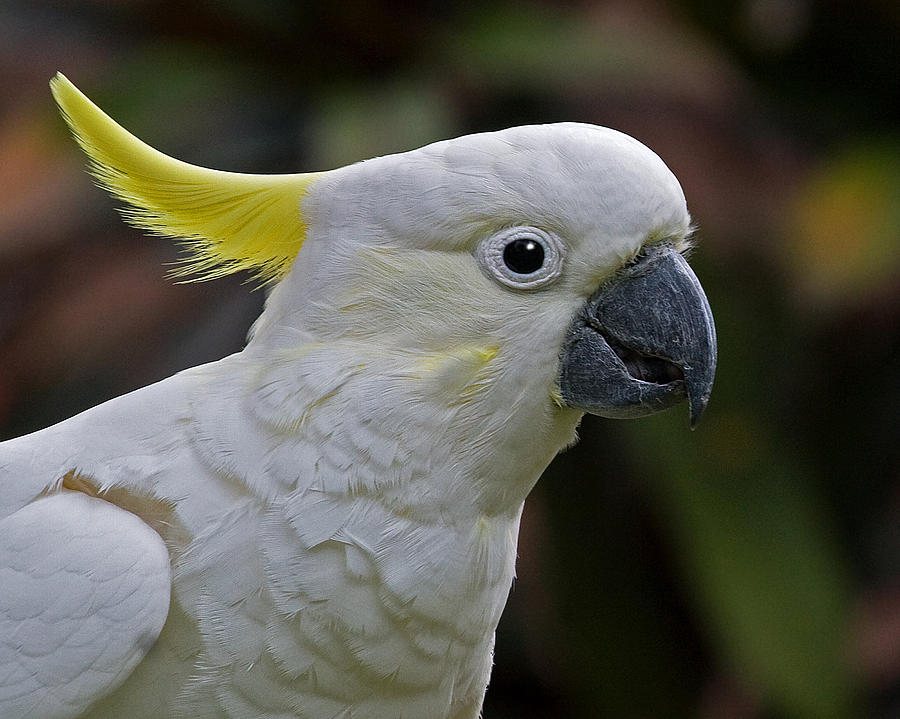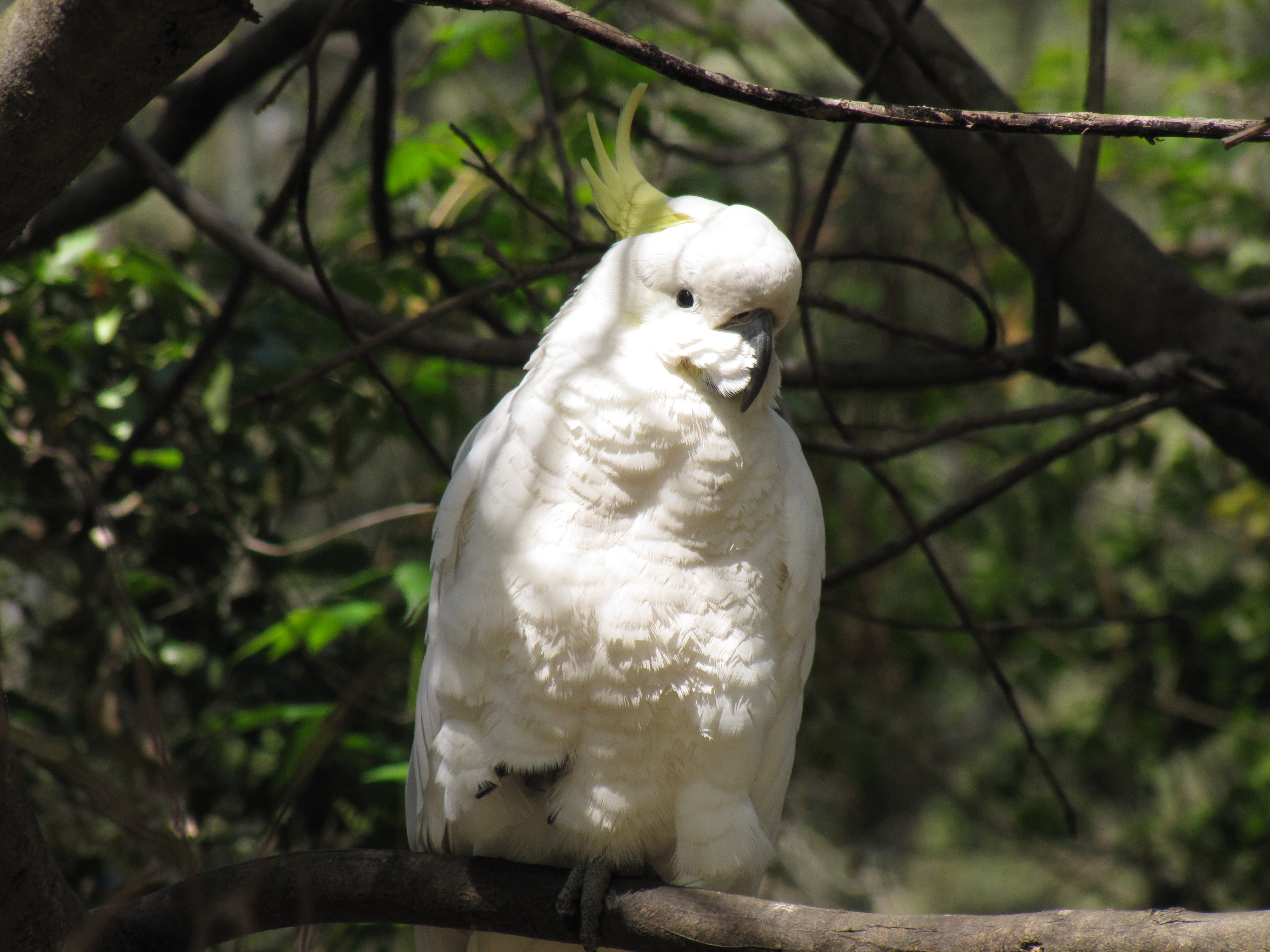

Where possible they’ll also return to the same nesting sites consecutive years.įemales won’t start breeding until between 3 and 7 years and males can be older. Their hollows are often only slightly larger than themselves and usually seven or eight metres above ground. Cockatoo breedingĬockatoos are socially monogamous, with pair bonds lasting many years, and make their nests in tree hollows. Other species such as the galah and long-billed corella are faster, taking around 6 months. Black cockatoos replace flight feathers one at a time, a moult taking two years to complete. They produce preen oil from a gland on their backs and wipe their feathers with their heads or other already oiled feathers.

Social birds, Cockatoos also spend time preening themselves and each other throughout the day. They are also known for their ability to mimic – including human speech.

Intelligent birds with engaging personalities, scientists have found as mimicking birds they’re hard-wired to connect sounds with motor skills, which means, they can synchronize body movements to a beat.4 Yes, cockatoos can dance – a skill very few animals have! Some like Gang Gang Cockatoos are relatively quiet, while the Palm Cockatoos will also drum on dead branches with sticks to communicate over distances.

Carnaby’s Black Cockatoo has up to 15 different calls, whereas others have less. Their harsh squawking vocals and the number of different calls varies by species. These noisy birds often feed in large flocks, making their unmistakable presence known (except for glossies – they tend to feed in pairs, trios of mum, dad and fledgling, or small family units). They are diurnal (active in the day), need light to find their food and aren’t early risers, tending to wait until there’s warmth in the sun before feeding. Their movable headcrest is raised when the birds are landing from flight or aroused.2 They also share with us a tendency to have a preferred foot (most will use their left foot to grip food when they eat). Like other parrots, cockatoos also have short legs and a waddling gait. In captivity cockatoos can live as long as humans. Kangaroo Island Glossy Black Cockatoo and south-eastern Red-tailed Black Cockatoo). Others are confined to small areas, such as Baudin’s Black Cockatoo and Carnaby’s Cockatoo, both endangered and limited to small areas of habitat in south-west Western Australia and some subspecies that are confined (e.g. It's fairly widespread though with the two eastern subspecies occurring from roughly Townsville to north-east Victoria, and the South Australian subspecies on Kangaroo Island. The Glossy Black Cockatoo, on the other hand, is more inclined to inhabit woodlands and forests because it's a dietary specialist, feeding exclusively on the seeds of she-oaks (principally Allocasuarina). Along with the Cockatiel, Galahs are nomadic, open country specialists that feed on grass seeds and move in flocks over large areas to wherever food is plentiful. Of the Australian species, Galahs are the most widespread, occurring over most of the country. Where do cockatoos live?Īs well as Australia, cockatoos can be found in Papua New Guinea, Indonesia, the Solomon Islands and the Philippines. They’ll also make use of their bill as a third limb when climbing.
SULFUR VS YELLOW COCKATOO PATCH
The large red patch on the Palm Cockatoo is the most obvious.Ĭockatoos share many characteristics in common with other parrots, including their curved beaks and gripping zygodactyl feet (two middle toes pointing forward and the other two backward). Several species have brightly coloured areas around their eyes and face called periophthalmic rings. Palm Cockatoo* ( Probosciger aterrimus), Pink Cockatoo (also known as Major Mitchell’s Cockatoo – Cacatua leadbeateri), Galah ( Cacatua roseicapilla), Gang Gang Cockatoo ( Callocephalon fimbriatum) and Cockatiel ( Nymphicus hollandicus).Ĭockatoos are mainly white, grey or black with spot colouring in the crests, cheeks or tails. Black cockatoosĬarnaby’s Black Cockatoo or Short-billed Black Cockatoo ( Calyptorhynchus latirostris), Baudin's Black Cockatoo or Long-billed Black Cockatoo ( Calyptorhynchus baudinii), Yellow-tailed Black Cockatoo ( Calyptorhynchus funereus), Red-tailed Black Cockatoo ( Calyptorhynchus banksii) and Glossy Black Cockatoo ( Calyptorhynchus lathami). Sulphur-crested Cockatoo ( Cacatua galerita), Little Corella ( Cacatua sanguinea), Long-billed Corella ( Cacatua tenuirostris) and Western Corella ( Cacatua pastinator). Australia is home to 14 cockatoo species, of which 11 exist in the wild only in Australia.


 0 kommentar(er)
0 kommentar(er)
